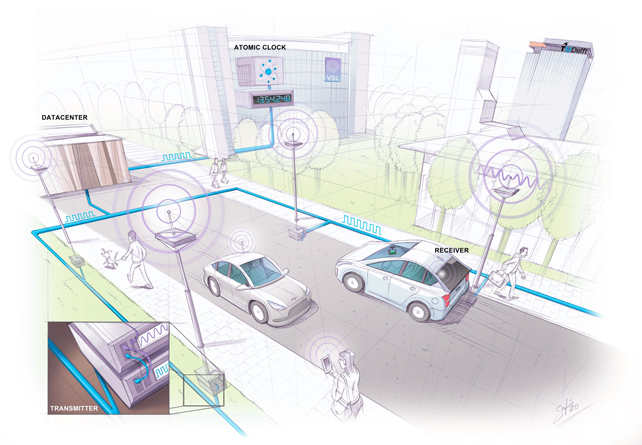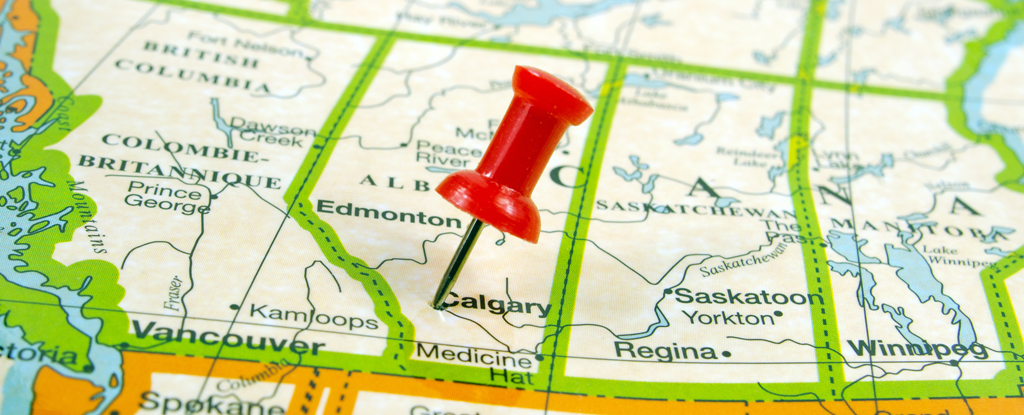Products You May Like
Many of us rely on GPS (Global Positioning System) to estimate travel times, find our way to new places, avoid traffic congestion, keep track of the kids, and generally avoid getting lost.
But it’s not always the most reliable of systems, especially in built-up areas where it’s difficult to get a straight line of sight to and from a satellite.
Now researchers have come up with a new and improved technology that could eventually replace GPS in some scenarios. Called SuperGPS, it’s accurate within 10 centimeters (or 3.9 inches) and doesn’t rely on navigation satellite systems.
The new approach makes use of networks similar to cell networks, but instead of streaming data to our phones the network gets a precise fix on the device.
A combination of radio transmitters and fiber-optic networks form the foundation of the system, with some smart tweaks on top.
“We realized that with a few cutting-edge innovations, the telecommunication network could be transformed into a very accurate alternative positioning system that is independent of GPS,” says physicist Jeroen Koelemeij from Vrije Universiteit Amsterdam in the Netherlands.
“We have succeeded and have successfully developed a system that can provide connectivity just like existing mobile and Wi-Fi networks do, as well as accurate positioning and time distribution like GPS.”
In a test site with six radio transmitters, the researchers were able to demonstrate their system in action across an area of 660 square meters (7,104 square feet). The timings of the transmitted radio signals can be measured and interpreted to gauge distance, which then reveals the position of individual devices.
One of the key components of the new network positioing system is a synchronized atomic clock: perfect timing means more precise positioning. Essentially, the fiber optic cables act as connections that keep everything in sync, and accurate to one billionth of a second.

The system also deploys a radio signal bandwidth that’s much larger than normal – although as radio spectrum bandwidth is expensive due to its scarcity, the team used several small bandwidth radio signals combined together to form a larger virtual bandwidth for the network communication.
This additional bandwidth overcomes one of the biggest problems with standard GPS, which is that radio signals get reflected off buildings and can quickly become confused.
“This can make GPS unreliable in urban settings, for instance, which is a problem if we ever want to use automated vehicles,” says electrical engineer Christiaan Tiberius, from the Delft University of Technology in the Netherlands.
As well as automated vehicles, the new system could be useful in planning quantum communication networks and next-generation networks for mobile devices, according to the researchers who developed it.
While Global Navigation Satellite Systems (GNSS) including GPS certainly have their uses and will continue to do so for a long time to come, experts are continually looking for ways to improve and refine it.
More testing is going to be required to establish this as a genuine alternative to GPS. The proposed network-based system would also take time to set up, in spite of the fact its transmission protocols and hardware are already in use. Current mobile and Wi-Fi masts could be adapted for the job at least, according to the researchers.
“This work provides a glimpse of a future in which telecommunication networks provide not only connectivity but also GNSS-independent timing and positioning services with unprecedented accuracy and reliability,” the researchers state in their published paper.
The research has been published in Nature.
